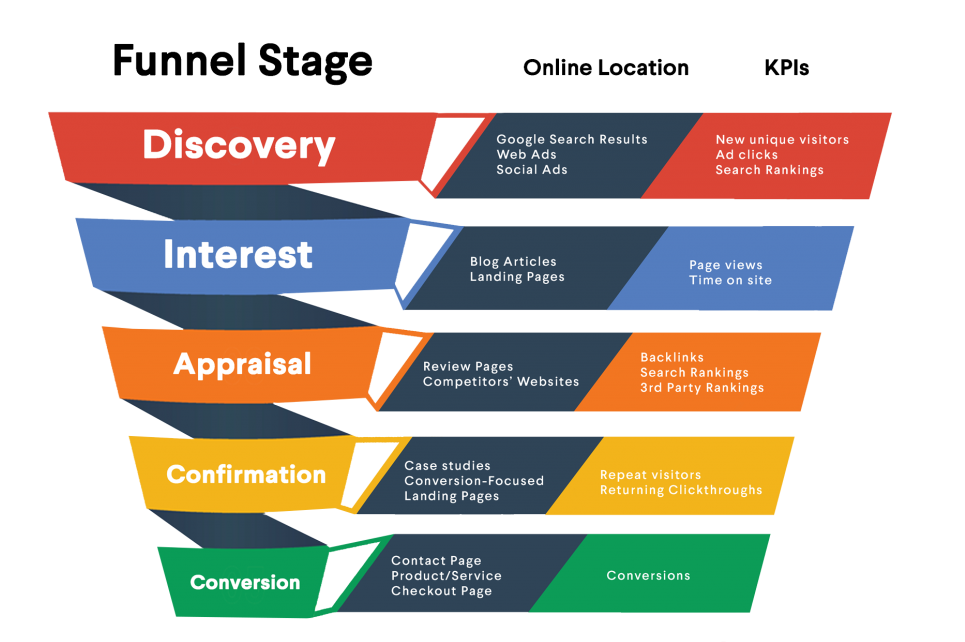In digital marketing, demand generation brings prospects to your website. Once they’re there, the series of pages they visit, in a single session or multiple sessions, determine their likelihood of converting into customers. This entire process is known as the digital marketing funnel.
When diagrammed, a digital marketing funnel shows the psychological state of your would-be customer as they travel through your website. It is divided into distinct stages for a clearer understanding of their changing experience and attitude towards your brand (visualized below).
Practically speaking, someone traveling through the stages of a digital marketing funnel is visiting various online “locations” on their path to conversion, such as a marketing e-mail, an ad, the Google search results, your website, and your competitors’ websites.
In this piece, we illustrate the digital marketing funnel in all its stages. Afterwards, we offer recommendations for improving your conversion rate at each stage of the funnel, citing examples of successful funnels along the way.
Here’s what the digital marketing funnel stage looks like:

Discovery ⇒ Interest ⇒ Appraisal ⇒ Confirmation ⇒ Conversion
The table below breaks down each stage, giving your prospect’s online location within that stage; and the KPIs that determine whether you’re succeeding at getting enough prospects to that stage.
The Digital Marketing Funnel Stages
| Funnel Stage | Online Location | KPIs | Description |
| Discovery | Google Search ResultsWeb or Social Ad | New unique visitorsAd clicksSearch rankings for unbranded keywords | A potential customer comes across your brand for the first time |
| Interest | Your website(blog article, landing page, or resource) | Page viewsTime on siteMicro-conversions (downloads, tool interactions, email subscriptions) | The potential customer skims your blog and landing pages for a quick overview of your brand |
| Appraisal | Reviews, both on and your website and 3rd partyCompetitor websites to compare products | BacklinksSearch rankings for unbranded keywordsRankings on 3rd party sites | Armed with basic information and interest, the potential customer branches out, digging deeper on your site and visiting competitor and 3rd-party sites for evaluation |
| Confirmation | Your website(case studies, conversion focused landing pages) | Repeat visitorsReturning email and social media clickthroughs | Convinced your product or service seems best, the potential customer returns for more details and a final push |
| Conversion | Your website(contact page, product checkout page) | Conversions | Finally, the potential customer makes their first purchase, or reaches out to your sales team and becomes a lead |
Stage 1: Discovery — The journey begins
The Discovery stage of the digital marketing funnel is where a potential customer first learns about you and your products, often without knowing they’re missing something or exactly what they’re looking for. Often, they’ll simply be trying to solve a problem or researching a pain point on Google, or browsing LinkedIn or Facebook when they happen to see your name.


Recent Comments